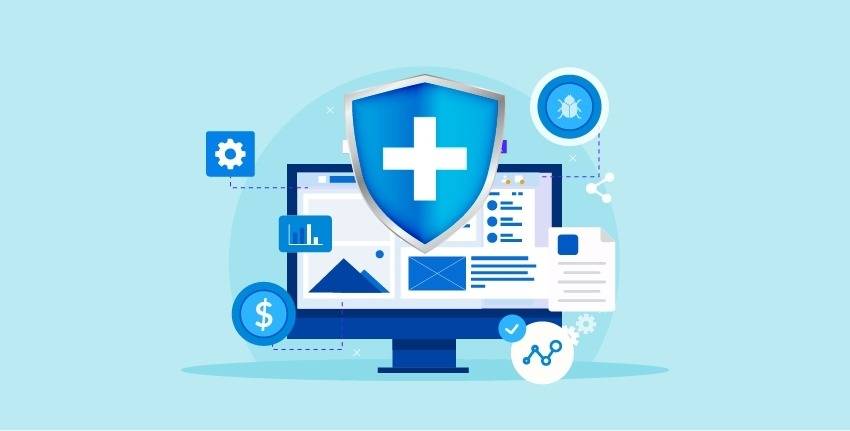Over the years, technology has played an essential role in various industries and has had significant impacts on businesses. After the rising spread of the Coronavirus in the early days of 2020, firms realized the importance of having software applications to ensure business process continuity. Not only has technology opened new doors for businesses, but also has accelerated the development of different tools to trace people with symptoms and control the pandemic from spreading.
One of the major contributions software technology has made is in the transformation of the healthcare sector. The new innovations of existing digital tools have caused major breakthroughs in medical sciences and treatments. So, now software technology and healthcare go side by side. Thus, the need for efficient software testing tools increases at a faster pace.
‘Quality’ is the main ingredient in a healthcare system and software apps appears to be involved in each stage of patient’s health care. From Electronic Medical Records (EMR), Admissions, Discharges, and Transfers (ADT), labs, pharmacies, to billings – they all depend on software applications. The life or death decisions depend on the performance and reliability of digital healthcare systems, organizations have no other choice but to focus on quality. Thus, testing digital products is critical to patient safety.
Moving to Digital Healthcare Products
For the past few months, healthcare practitioners have faced immense pressure, thus they are turning to digital products, and re-evaluating their need for software applications and ways to ensure patient care. At the same time, healthcare providers are adopting technology-enabled care (TEC), mobile apps, to provide accurate diagnosis and better outcomes. Due to lockdown measures taken by different governments, doctors needed alternatives to provide remote care for their patients and offer a personalized experience similar to the one they would have otherwise. Medical providers have also put in efforts to decrease hospital trips, so those battling the virus could be cared for, and avoid spreading the germs. They have utilized telemedicine to help people receive the medical aid they need while maintaining social distance.
As the industry experts continue to innovate, software apps will be released at a faster pace than before. Artificial Intelligence (AI) has already accelerated the development of new diagnostic tests, treatments, and vaccines. It can also be used in developing apps for contract tracing, monitoring mental health, and keeping people connected remotely. AI has helped professionals at understanding the needs of their patients and provide them with better assessment, advice, and support in these uncertain times.
Adds Pressure on QA Teams to Test Better
Software testing companies need to work seamlessly with their medical equipment and electronic health records (EHR) to improve patient care and reduce costs. However, this increase can also add new pressure on technical teams to ensure the user journey is smooth. This is where software testing plays a vital role in developing apps to cope up with the current situation.
Testing to Improve Health Care Services
Just the way highly trained medical staff has gone through rigorous testing to ensure they can deliver the best possible care to their patients, the same need appears in the case of technology. It is important to focus widely on testing the technology being used to treat patients, monitor them, and update their records. Healthcare experts increase their dependence on software products and demand that these systems meet the highest standards of quality and reliability. In the healthcare sector, if the right information is not shared between the concerned persons at the right time, it can have severe consequences.
Increased Dependency on Technology – Increases the Need for Testing
We know the trust people put in healthcare provides, and these medical professionals rely greatly on the technologies to deliver life-saving services. Technological transformations have improved patient care, made them more reliable, and allowed workers to record data and update their medical history. However, if these systems do not undergo sufficient testing, patients could be exposed to significant risks.
With the evolving technology, organizations are required to release and deploy new software faster, while improving efficiency and delivering quality apps. Software testing needs to be at the top in order to provide a seamless digital experience. There is zero tolerance for functionality, performance, or usability issues in this sector. QA teams need to test each release to ensure it is bug-free and provides a better user journey. By automating this process, the chances of errors will minimize and the chance of manual errors will also decrease, allowing professionals to focus on innovative products. When a modern testing approach is used for various apps combined with monitoring performance to identify and address any issues before they can impact a business.
The New Normal
The outbreak of COVID-19 has changed our lives like never before and thus motivated medical professionals to move to more digital products and improve patient care by promoting the use of telehealth. We expect telemedicine to grow exponentially in the years to come, as more people are growing digitally and enjoy the convenience of being in the comfort of their home for a doctor’s appointment. Yet there are major concerns with respect to the security of data, its privacy, and effectiveness as compared to the in-person visits – all these need to be addressed while the medical experts ensure everyone gets the vaccine.
As organizations prepare for the next phase, it will be imperative to ensure new technology and apps are working properly. It is also important to identify any issues in the earlier stages. With end-to-end test automation, the software quality can be delivered at a faster pace, while allowing teams to focus on providing improved patient care services.


























